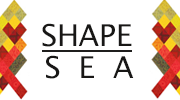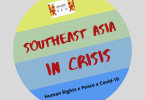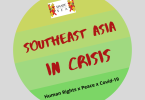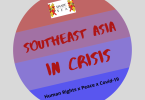Dr. Chen, Li-LiDepartment of Political Science, Faculty of Social ScienceUniversidade Nacional Timor Lorosa ™e
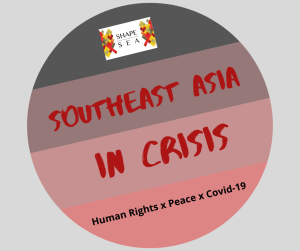 COVID-19 is changing how we teach and learn worldwide in a significant way. According to UNESCO, almost 80% of the children and youth are engaging in online learning (UNESCO, 2020). Timor-Leste struggles to replace the face-to-face with online learning while abiding by the policies of stay-at-home and social distancing to contain the spread of COVID-19. On 23 March, Ministry of Education announced that all schools have extraordinary holidays until 28 in order to prepare students to adapt to alternative ways of learning (Ministério da Educação, Juventude e Desporto, 2020). During the state of emergency, schools are closed and classes are moved online. Teachers and students have to adopt and adapt to a new norm-online or distance learning.Although online learning is common to many universities worldwide, universities in Timor-Leste do not have any experience or privilege to conduct it. What ™s more, many lecturers and students have experienced various obstacles to practice online learning. Those who live in remote rural areas and socio-economic disempowered ones are further impeded to participate online courses. Although online learning seems to be the only solution to ensure the access to education for all while schools shut down, utilizing online learning without considering how it strikes vulnerable university teachers and students risks deepening existing digital gap and social inequalities.Currently teaching in the Faculty of Social Science of Universidade Nacional Timor Lorosa ™e (UNTL), the only national university in Timor-Leste, I am at the frontline to conduct and observe the current practice of online learning since 24 March until now (13 April). In the following, I will share and discuss some of my observations.University students and teachers are burdened to carry out online quality teaching and learning without extra support. In 2019, education sector only got 10% of the national budget of Timor-Leste. The budget was mainly used to cover salaries and benefits as well as services and goods. After the rejection of national budge 2020, all schools temporarily depend on a duodecimal system, distributing 116.5 million with each state agency allowed to spend one-twelfth of its 2019 appropriation (excluding minor capital) each month (Lao Hamutuk, 2020). In the Faculty of Social Science of UNTL, for example, no funding was dispatched this year for maintaining or upgrading facilities and equipment, such as internet and computers. Nothing from the package of $250 million US dollars used for COVID-19 is spent on improving online education (Martins, 2020). Students and professors in UNTL mostly rely on themselves to access to internet, since there is no free WiFi coverage on campus. Occasional power outage and unstable supply of the electricities force regional server and working station to shut down. What ™s worse, the internet service available in Timor-Leste is expensive yet of slow speed. Data price is 1MBPS USD 500 high while internet speed is 25 times slower than other countries in Asia and the Pacific (Inder, 2019).Online learning is ineffective and costly in Timor-Leste from teachers ™ side. In UNTL, teaching online has been considered as unrealistic and ineffective. In UNPAZ, one top private university in Dili, only 50% of students can access online courses (Amado, 2020). Teachers are rarely prepared to conduct courses online and consequently are forced to move courses online simply based on their personal knowledge and experiences with short notice. The main difficulty for most teachers to deliver online courses of quality is the limited access to technology and digital gap. Lack of telecommunication infrastructure and information technology prevent teachers to transform to teaching online smoothly, and it does not come without costs: For teachers who use webinar and livestream tend to be deterred or paralyzed by slow and unstable internet; For those who use Facebook and whatsapp to facilitate teaching are prone to compromise quality of teaching, since social media has less functions and tool kit. Moreover, they conduct online teaching without having a clear boundary between work hours and private time, and even risk exposing their privacy to the public. Teachers who are parents are burdened with work while looking after children at home 24/7. While juggling between teaching work and care work, some low-waged par-time teachers might be stretched and even sacrifice their work with extra burden of care work at home.For students who are in the receiving end of online learning, accessing and participating online course are both stressing and burdening, especially for those who have less resources or live in remote areas. There are 3218 students registered in the Faculty of Social Science in the year of 2019. Unlike many universities in America, which have ways to accommodate disadvantaged students, such as welcoming them to campus to use free WiFi and electronic resources or uploading videos and deliver them at their door step, the universities in Timor-Leste are merely dependent on teachers working from home in response to students ™ needs (ç¿å±¥ä¸ï¼Œ2020). Nevertheless, most students have low connectivity due to lack of electricity, internet credit (pulsa), electronic products (laptop, cell phone, tablet), and even money to buy necessities. While many students choose to return to rural areas under the fear of COVID-19 or financial insecurity, they are more restrained to access to information and participating education online. They also complain about the reliability, speed, and price of the internet (Tam, 2020). The dean had to ask the teachers not to oblige students who have no access to internet and online course to attend online courses. What is more, online learning could further marginalize the most vulnerable students instead of empowering them, since they have to allocate the money for essential goods (Oxfam International in Timor-Leste, 2020). It is worrisome that they would gradually disappear and eventually drop out from school, which has more drastic gender implications particularly on women.In addition, it is also difficult for students of disabilities to be included in online courses while guaranteeing them with reasonable accommodation. Neither special learning facilities in the faculty exist for students of disabilities, nor orientation for lecturers to accommodate them. While there are 16 students of disabilities out of 39 students in the program of Communal and Social Inclusion in the Faculty of Social Science in academic year 2019, it remains unclear how they are accommodated and perform in online teaching.It is undeniable that online learning can provide flexible and accessible education, but it may burden and stress teachers and students while deepening social inequality preexisting in the society. The digital and economic gap among students and professors might be too difficult to be bridged. Online learning under COVID-19 has brought some serious challenges to the fore, and now is time for all of us to confront the dire situation hidden under the equality skin and take immediate action.References:Amado, Tome. (2020, April 8). Estudente UNPAZ pursentu 50 la asesu estuda online. Accessed April 12 2020.Lao Hamutuk. (2020). 2020 General State Budget. https://www.laohamutuk.org/econ/OGE20/19OGE20.htm. Accessed April 11 2020.Inder, Brett. (2020). Speed matters. Accessed April 13 2020.Martins, Evaristo Soares. (2020, April 2). Proposta adisional la pasa, proposta original aprovadu. . Accessed April 4 2020.Ministério da Educação, Juventude e Desporto. (2020, March 21). . Accessed April 13 2020.Oxfam international in Timor-Leste. (2020). Towards economic diversification in Timor-Leste. https://cng-cdn.oxfam.org/asia.oxfam.org/s3fs-public/file_attachments/Towards%20Economic%20Diversification%20in%20Timor-Leste%20-%20English.pdf. Accessed April 11 2020.Tam, Therese Nguyen Thi Phuong. (2020, April 13). Information can Save Lives: Assessing public access to ICT in the midst of COVID-19 in Timor-Leste. Accessed April 13 2020.UNESCO. (2020, March 24). 1.37 billion students now home as COVID-19 school closures expand, minister scale up multimedia approaches to ensure leaning continuity. Accessed April 13 2020.ç¿å±¥ä¸. (2020, March 30). åŸé‘‘海外,線上教育ä¸åªéè¦ç¶²è·¯. Accessed April 13 2020.
COVID-19 is changing how we teach and learn worldwide in a significant way. According to UNESCO, almost 80% of the children and youth are engaging in online learning (UNESCO, 2020). Timor-Leste struggles to replace the face-to-face with online learning while abiding by the policies of stay-at-home and social distancing to contain the spread of COVID-19. On 23 March, Ministry of Education announced that all schools have extraordinary holidays until 28 in order to prepare students to adapt to alternative ways of learning (Ministério da Educação, Juventude e Desporto, 2020). During the state of emergency, schools are closed and classes are moved online. Teachers and students have to adopt and adapt to a new norm-online or distance learning.Although online learning is common to many universities worldwide, universities in Timor-Leste do not have any experience or privilege to conduct it. What ™s more, many lecturers and students have experienced various obstacles to practice online learning. Those who live in remote rural areas and socio-economic disempowered ones are further impeded to participate online courses. Although online learning seems to be the only solution to ensure the access to education for all while schools shut down, utilizing online learning without considering how it strikes vulnerable university teachers and students risks deepening existing digital gap and social inequalities.Currently teaching in the Faculty of Social Science of Universidade Nacional Timor Lorosa ™e (UNTL), the only national university in Timor-Leste, I am at the frontline to conduct and observe the current practice of online learning since 24 March until now (13 April). In the following, I will share and discuss some of my observations.University students and teachers are burdened to carry out online quality teaching and learning without extra support. In 2019, education sector only got 10% of the national budget of Timor-Leste. The budget was mainly used to cover salaries and benefits as well as services and goods. After the rejection of national budge 2020, all schools temporarily depend on a duodecimal system, distributing 116.5 million with each state agency allowed to spend one-twelfth of its 2019 appropriation (excluding minor capital) each month (Lao Hamutuk, 2020). In the Faculty of Social Science of UNTL, for example, no funding was dispatched this year for maintaining or upgrading facilities and equipment, such as internet and computers. Nothing from the package of $250 million US dollars used for COVID-19 is spent on improving online education (Martins, 2020). Students and professors in UNTL mostly rely on themselves to access to internet, since there is no free WiFi coverage on campus. Occasional power outage and unstable supply of the electricities force regional server and working station to shut down. What ™s worse, the internet service available in Timor-Leste is expensive yet of slow speed. Data price is 1MBPS USD 500 high while internet speed is 25 times slower than other countries in Asia and the Pacific (Inder, 2019).Online learning is ineffective and costly in Timor-Leste from teachers ™ side. In UNTL, teaching online has been considered as unrealistic and ineffective. In UNPAZ, one top private university in Dili, only 50% of students can access online courses (Amado, 2020). Teachers are rarely prepared to conduct courses online and consequently are forced to move courses online simply based on their personal knowledge and experiences with short notice. The main difficulty for most teachers to deliver online courses of quality is the limited access to technology and digital gap. Lack of telecommunication infrastructure and information technology prevent teachers to transform to teaching online smoothly, and it does not come without costs: For teachers who use webinar and livestream tend to be deterred or paralyzed by slow and unstable internet; For those who use Facebook and whatsapp to facilitate teaching are prone to compromise quality of teaching, since social media has less functions and tool kit. Moreover, they conduct online teaching without having a clear boundary between work hours and private time, and even risk exposing their privacy to the public. Teachers who are parents are burdened with work while looking after children at home 24/7. While juggling between teaching work and care work, some low-waged par-time teachers might be stretched and even sacrifice their work with extra burden of care work at home.For students who are in the receiving end of online learning, accessing and participating online course are both stressing and burdening, especially for those who have less resources or live in remote areas. There are 3218 students registered in the Faculty of Social Science in the year of 2019. Unlike many universities in America, which have ways to accommodate disadvantaged students, such as welcoming them to campus to use free WiFi and electronic resources or uploading videos and deliver them at their door step, the universities in Timor-Leste are merely dependent on teachers working from home in response to students ™ needs (ç¿å±¥ä¸ï¼Œ2020). Nevertheless, most students have low connectivity due to lack of electricity, internet credit (pulsa), electronic products (laptop, cell phone, tablet), and even money to buy necessities. While many students choose to return to rural areas under the fear of COVID-19 or financial insecurity, they are more restrained to access to information and participating education online. They also complain about the reliability, speed, and price of the internet (Tam, 2020). The dean had to ask the teachers not to oblige students who have no access to internet and online course to attend online courses. What is more, online learning could further marginalize the most vulnerable students instead of empowering them, since they have to allocate the money for essential goods (Oxfam International in Timor-Leste, 2020). It is worrisome that they would gradually disappear and eventually drop out from school, which has more drastic gender implications particularly on women.In addition, it is also difficult for students of disabilities to be included in online courses while guaranteeing them with reasonable accommodation. Neither special learning facilities in the faculty exist for students of disabilities, nor orientation for lecturers to accommodate them. While there are 16 students of disabilities out of 39 students in the program of Communal and Social Inclusion in the Faculty of Social Science in academic year 2019, it remains unclear how they are accommodated and perform in online teaching.It is undeniable that online learning can provide flexible and accessible education, but it may burden and stress teachers and students while deepening social inequality preexisting in the society. The digital and economic gap among students and professors might be too difficult to be bridged. Online learning under COVID-19 has brought some serious challenges to the fore, and now is time for all of us to confront the dire situation hidden under the equality skin and take immediate action.References:Amado, Tome. (2020, April 8). Estudente UNPAZ pursentu 50 la asesu estuda online. Accessed April 12 2020.Lao Hamutuk. (2020). 2020 General State Budget. https://www.laohamutuk.org/econ/OGE20/19OGE20.htm. Accessed April 11 2020.Inder, Brett. (2020). Speed matters. Accessed April 13 2020.Martins, Evaristo Soares. (2020, April 2). Proposta adisional la pasa, proposta original aprovadu. . Accessed April 4 2020.Ministério da Educação, Juventude e Desporto. (2020, March 21). . Accessed April 13 2020.Oxfam international in Timor-Leste. (2020). Towards economic diversification in Timor-Leste. https://cng-cdn.oxfam.org/asia.oxfam.org/s3fs-public/file_attachments/Towards%20Economic%20Diversification%20in%20Timor-Leste%20-%20English.pdf. Accessed April 11 2020.Tam, Therese Nguyen Thi Phuong. (2020, April 13). Information can Save Lives: Assessing public access to ICT in the midst of COVID-19 in Timor-Leste. Accessed April 13 2020.UNESCO. (2020, March 24). 1.37 billion students now home as COVID-19 school closures expand, minister scale up multimedia approaches to ensure leaning continuity. Accessed April 13 2020.ç¿å±¥ä¸. (2020, March 30). åŸé‘‘海外,線上教育ä¸åªéè¦ç¶²è·¯. Accessed April 13 2020.
